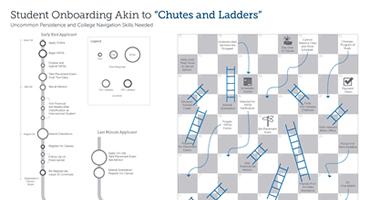New Data Highlights Demographic Shifts in College Admissions Prior to Enrollment
Title: College Enrollment Patterns Are Changing. New Data Show Applicant and Admit Pools Are Too.
Authors: Jason Cohn, Bryan J. Cook, Victoria Nelson
Source: Urban Institute
Since 2020, higher education has changed drastically—shaped by the effects of COVID-19, the end of race-conscious admissions, delays in student aid from the new FAFSA, and shifting federal and state policies on DEI.
The Urban Institute, in collaboration with the Association of Undergraduate Education at Research Universities and the University of Southern California’s Center for Enrollment Research, Policy, and Practice, partnered with 18 colleges and universities to address data gaps in racial demographic shifts among applicants, admits, and enrollees at four-year institutions between 2018 and 2024.
The analysis found that applicant, admit, and enrollee profiles varied significantly by race and ethnicity. Across all institutions, one consistent trend emerged: a rise in the number of students who chose not to disclose their race or ethnicity in 2024.
For Black students at selective institutions (defined as having an acceptance rate below 50 percent), the share of applicants rose slightly between 2023 and 2024 (from 8.3 percent to 8.7 percent), while the share of admits declined (from 6.6 percent to 5.9 percent). By contrast, the proportions of Black applicants and admits between 2021 and 2023 remained relatively stable.
The data also revealed a notable trend for White students, who were the only group to consistently make up a larger share of admits than applicants—by six to nine percentage points. This occurred even as the share of White students declined across applicant, admit, and enrollee groups since 2018.
The report concludes that more comprehensive data are needed at every stage of the admissions process. Enrollment data alone provide limited insight into the end of the pipeline; collecting data throughout the application, admission, and enrollment stages would allow for a fuller understanding of how different student groups are navigating higher education.
Read the full report here.
—Harper Davis
If you have any questions or comments about this blog post, please contact us.


